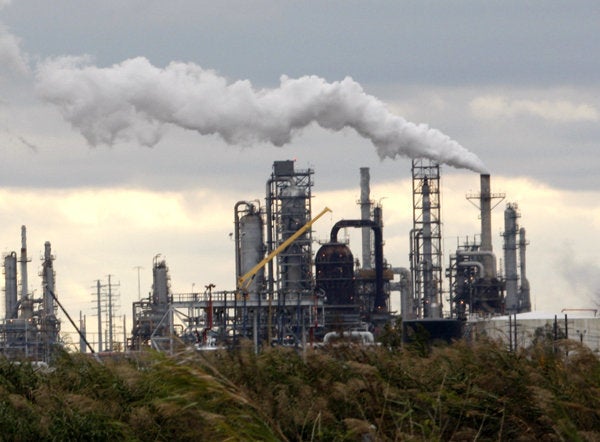
Forty years after the passage of the Clean Air Act, it is extraordinary to look at the numbers.
Numbers like 200,000 -- which is the count of premature deaths the Clean Air Act prevented in its first 20 years. Over the same period, the Act prevented 672,000 cases of chronic bronchitis and 21,000 cases of heart disease. It avoided 843,000 asthma attacks and 18 million child respiratory illnesses.
1.7 million is the number of tons of toxic emissions removed from our air every year since 1990. In the last two decades, emissions of six common pollutants dropped 41 percent. Lead in our air is down by 92 percent since 1980.
Here is another: 95 percent. Innovations spurred by the Clean Air Act make the cars we drive today up to 95 percent cleaner than past models.
And as air pollution has dropped over the last 40 years, our national GDP has risen by 207 percent.
The total benefits of the Clean Air Act amount to more than 40 times the costs of regulation. For every one dollar we have spent, we have received more than $40 of benefits in return, making the Clean Air Act one of the most cost-effective things the American people have done for themselves in the last half century.
But here is perhaps the most important number to consider as we work to continue this success: two. The Clean Air Act and the Clean Air Act Amendments were passed and enforced by the bipartisan collaboration of two political parties.
The 1970 law was signed by President Richard Nixon. It was first implemented by Administrator William D. Ruckelshaus, a Republican. The 1990 Amendments were passed by a Democratic-majority Congress and signed by the Republican President George H. W. Bush. Clean air has always been a bipartisan issue -- and should remain that way.
The good news is that the Clean Air Act has plenty for both sides to agree on. Extraordinary environmental and health benefits have come about by not only respecting, but thriving on, the openness and entrepreneurship of our economy. Our economy and environment benefit from a virtuous cycle in which public clean air standards spark private sector innovation, proving that we can create jobs and opportunities without burdening our citizens with the effects of pollution.
The bad news is that 40 years of success have not stopped the proliferation of exaggerated doomsday predictions. They appear in nearly identical form year after year, and history always proves them wrong.
In the 1970s lobbyists said that "entire industries might collapse" if we used the Clean Air Act to phase in catalytic converters for new cars and trucks. Instead, the requirement gave birth to a global market for catalytic converters and enthroned American manufacturers at the pinnacle of that market.
In the 1980s opponents of proposed Clean Air Act Amendments claimed they would cause "a quiet death for businesses across the country." Instead, the US economy grew by 64 percent even as acid rain pollution fell by half. The requirements fostered a global market in smokestack scrubbers and, again, gave American manufacturers dominance in that market.
In the 1990s many claimed that using the Clean Air Act to phase out the CFCs that were depleting our ozone layer would create "severe economic and social disruption." They raised the fear of "shutdowns of refrigeration equipment in supermarkets... office buildings, our hotels, and hospitals." In reality, new technology cut costs while improving productivity and quality. The phase-out happened five years faster than predicted and cost 30 percent less. And by making their products better and cleaner, the American refrigeration industry reached new overseas markets.
None of the doomsday predictions have come true -- and there is no reason to believe they will come true as we write the next chapter in the history of the Clean Air Act. It is our time to promote innovation, grow a clean economy, and address the new challenges and the unfinished business of the Act. Those include long-term health threats in the air we breathe, as well as first steps -- like the clean cars program -- in our fight against climate change.
Today, plenty of businesses and industry sectors have stepped up to help in the fight against climate change. There are plenty of ways to move forward in a common sense, bipartisan way that serves the health of the American people and the prosperity of American businesses, and not just the electoral prospects of a political party.
We cannot afford to get bogged down in the delay and distractions of partisan politics. This is because of the last number I ask you to consider: one. We have only one planet, and this may be our one chance to protect it for our children and grandchildren.